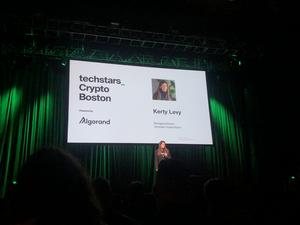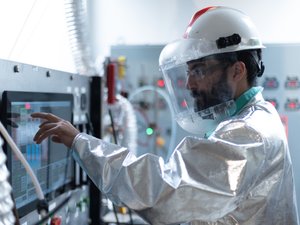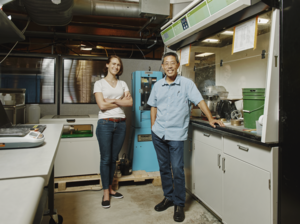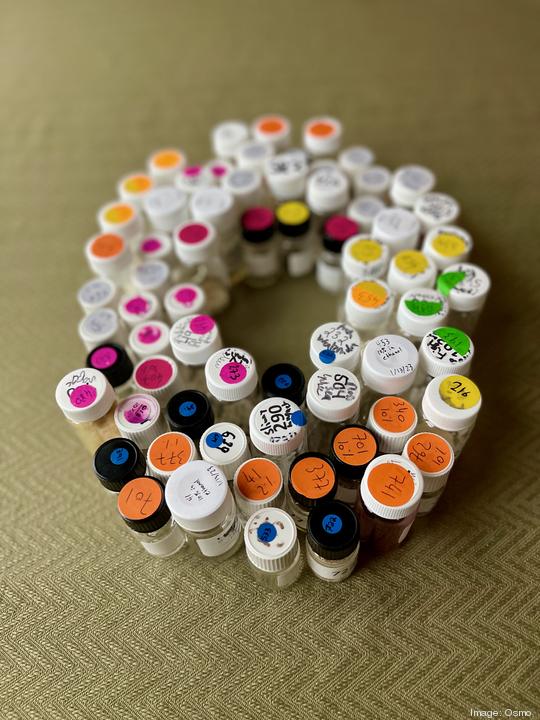
This Cambridge startup thinks it’s on the scent of the next great innovation in olfactory technology.
Humans have found a way to map out colors visually with tools like the RGB color model. Sound frequencies can be captured, replicated and transmitted. Now, Osmo founder Alex Wiltschko says it’s time to digitize aromas and put this technology to work.
Wiltschko founded and led the digital olfaction group at Google Research. Over the last five or so years, the group began developing software to predict what a molecule smells like from its structure.
After hitting some scientific milestones that indicated they were on the right track, Wiltschko said, they decided to spin out and create Osmo, an independent company with $60 million in initial capital led by Lux Capital and GV (Google Ventures). The company’s mission is, as Wiltschko puts it, to “give computers a sense of smell.”
How do you teach a computer how to smell?
Wiltschko said it starts with a dataset of perfume ingredients, which includes a molecule’s structure and corresponding odor description. After that, it’s all about teaching the computer to notice patterns in molecule structures that point to certain scents.
“The goal of the software system, of our machine learning system, is to take in the structure of a molecule and to predict what odor labels actually match this molecule,” said Wiltschko, who completed his Ph.D. in olfactory neuroscience at Harvard University. “And then to really test it, we could feed it a molecule it’s never seen before.”
Wiltschko said their computer model held its own when they tested its ability to determine scents as compared to people trained to rate odors.
“Our neural networks predictions were better than the average panelist, as compared to the average of about 18 people that were doing this task,” Wiltschko said.
Last September, the researchers shared their findings in a draft paper published in bioRxiv.
Turning scents into dollars
It’s an interesting idea. But Wiltschko said this computer model also has real-world implications and several business opportunities.
One application is in replacing natural ingredients that are used to create aromas in products like shampoos, lotions, perfumes, laundry detergents and more. Osmo wants to be able to replicate aromas to replace natural ingredients that might not be biodegradable, renewable or affordable.
“We discover new molecular IP, we validate that IP, we make sure that it is the molecule we thought it was, we make sure that it has all the properties that we want. And then we work with partners in order to make sure that it’s manufactured at scale and in products that make people smile,” Wiltschko said.
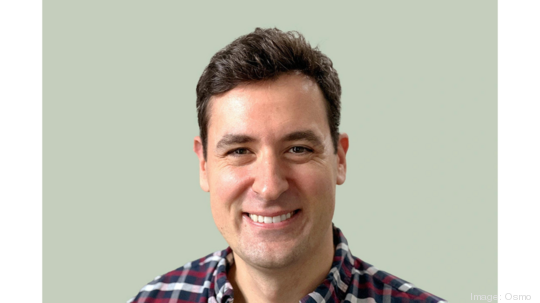
He said they’re also open to working with partners who want them to create a molecule with a certain aroma, say, one that smells like sweet potatoes. Their technology can help create new scents by teasing out the previously unknown ingredients, Wiltschko said. Osmo would retain the IP rights and license the molecule that was custom-made for the partner.
Osmo is also working on a way to digitize people’s sense of smell. Similar to a camera, this would require a “lens” to capture a scent, sensors and software to understand the sensory information and a printer or display device. Osmo has built the software component, Wiltschko said, and they’re looking to partner with organizations who have created the sensors and displays.
Wiltschko said they’re in the early stages of the process, and declined to share any details on partnerships.
Beyond all of this work, Wiltschko said the goal of the company is creating a future where computers can smell diseases.
“Computers can smell cancer. Computers can smell Covid-19. Computers can smell Parkinson’s disease. All of these things, living beings can do. People or dogs can smell these diseases. And if we could give that capability to computers, people would be alive today that are not,” Wiltschko said.
Of course, achieving this goal is further down the road of scientific achievements. In the year ahead, Wiltschko said Osmo will focus on developing its platform, building partnerships and hiring. The startup’s 12-person team is based at The Engine. Wiltschko expects the team to double this year.
“We’re keeping a broad aperture. We’re building capability. We’re building the team. And we’re also driving forward small molecule development,” Wiltschko said.
